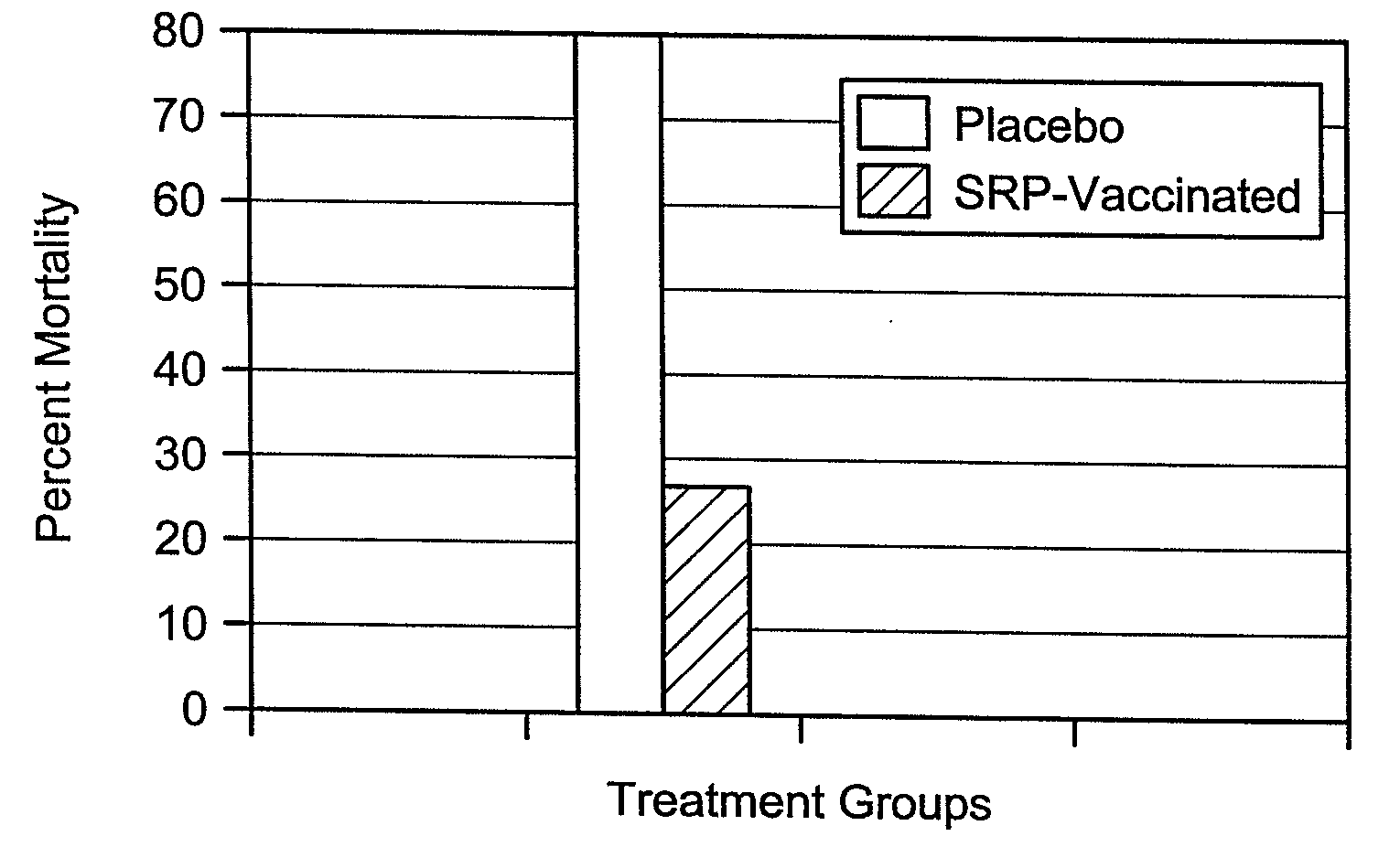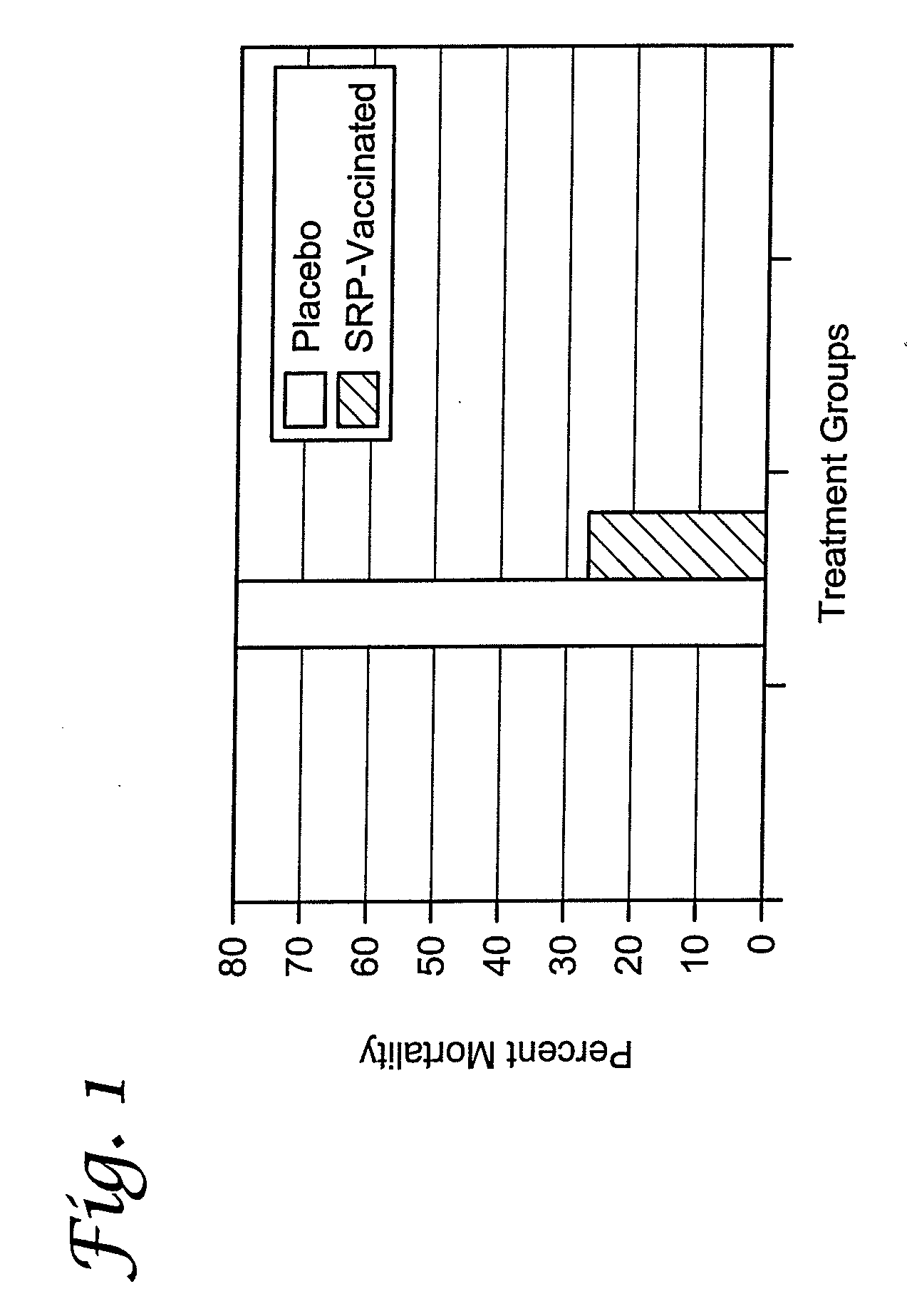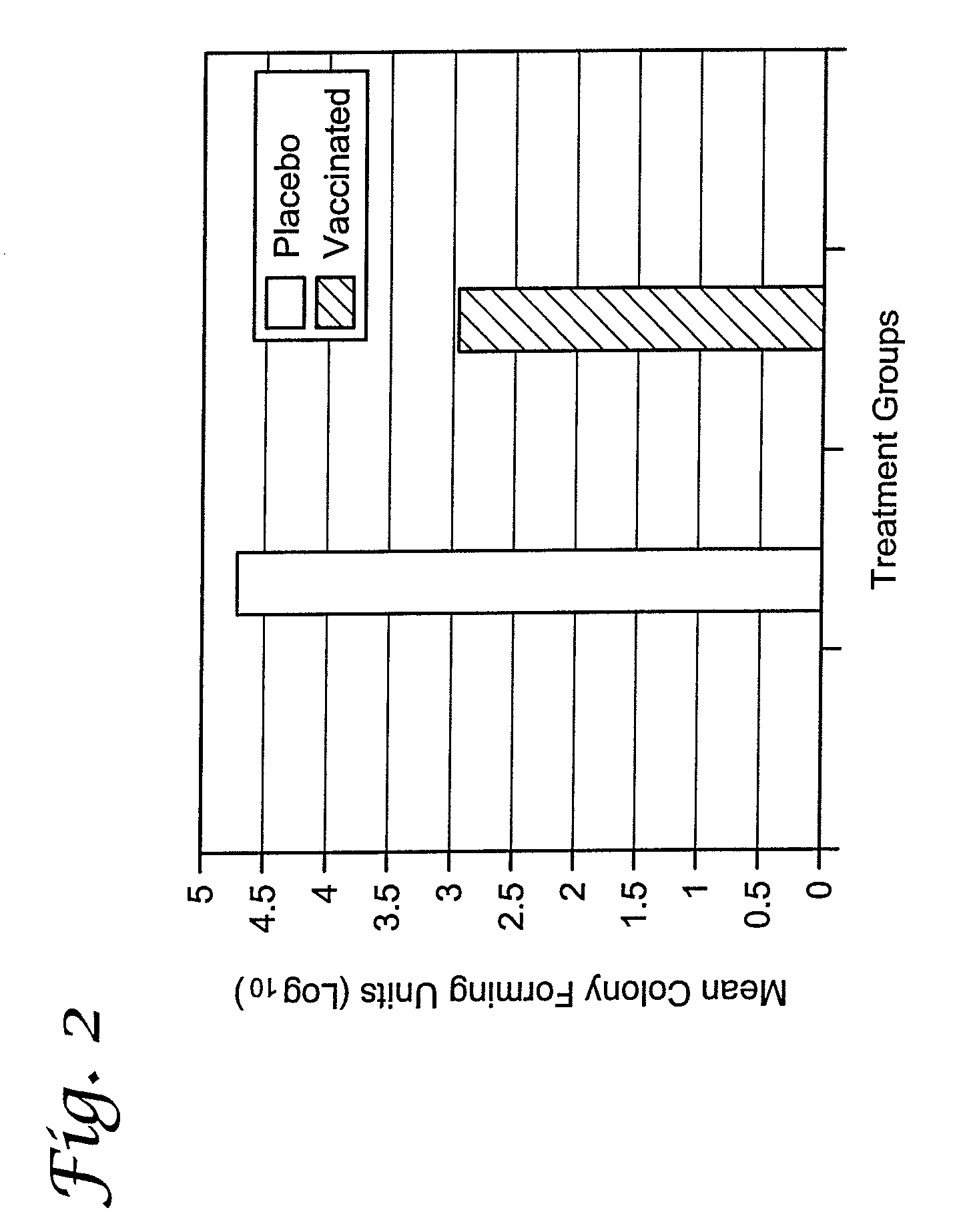Fusobacterium polypeptides and methods of use
a technology of fusobacterium and polypeptides, applied in the field of fusobacterium polypeptides and methods of use, can solve the problems of insufficient protection in cattle, difficult genomic comparison, and little knowledge regarding i>fusobacterium /i>spp iron-acquisition
- Summary
- Abstract
- Description
- Claims
- Application Information
AI Technical Summary
Benefits of technology
Problems solved by technology
Method used
Image
Examples
example 1
Fusobacterium spp. Culture Conditions
[0069]Fusobacterium spp. necrophorum can be grown under controlled fermentation conditions so as to express proteins, including proteins associated with the outer membrane. The bacteria can be harvested and the proteins can then be isolated and used as immunogens in a composition.
[0070]Anaerobic conditions for growth of F. necrophorum on plates and in small liquid cultures were established by incubation in an anaerobic jar containing an anaerobic gas generator system. A master seed stock of a Fusobacterium necrophorum subsp. necrophorum originating from a sheep and available from the American Type Culture Collection as ATCC number 27852 was prepared by inoculating the isolate into 200 ml of Porcine Brain Heart Infusion Broth (P-BHI, Difco) containing 0.05% cysteine (Sigma) and containing 15 to 20 micrograms per milliliter (μg / ml) of 2,2-dipyridyl (Sigma-Aldrich St. Louis, Mo.). The culture was grown without stirring at 16 hours at 37° C. under an...
example 2
Production of Metal Regulated Proteins
[0071]Fermentation: A cryogenic vial of the working seed (1 ml at 109 CFU / ml) was used to inoculate 130 ml of 37° C. P-BHI containing 15 micrograms (μg) 2,2-dipyridyl and 0.05% cysteine (Sigma) and incubated in a candle jar. The culture was incubated at 37° C. for 12 hours at which point was sterilely transferred into 1.3 liters of the above media. This second culture was allowed to grow for an additional 10 hours at 37° C. This culture was used to inoculate a 20-liter Bioflo IV bench-top fermentor, (New Brunswick Scientific Co, Edison N.J.) charged with 13 liters of the above-described media. The pH was held constant between 6.9 and 7.1 by automatic titration with 30% NaOH and 10% HCL. The stirring speed was adjusted to 100 revolutions per minute (rpm), and the culture purged with pure nitrogen to maintain an anaerobic condition. The culture was allowed to grow continuously at these conditions for 24 hours at which point the fermentation was te...
example 3
Analysis of Proteins
[0077]The protein profile of the F. necrophorum subsp. necrophorum isolate grown in iron-replete and / or iron-deplete media was examined by SDS-PAGE. Briefly, the organism was grown from a frozen master seed stock by sub-culturing into 25 ml of P-BHI containing 0.05% cysteine (sigma) and 15 to 20 micrograms per milliliter (μg / ml) of 2,2-dipyridyl (Sigma-Aldrich St. Louis, Mo.) and / or P-BHI containing 200 uM ferric chloride incubated for 18 hours at 37° C. while stirring at 100 rpm. At 18 hours of incubation, 5 ml of each culture was transferred into 500 ml of pre-incubated (37° C.) iron-deplete and / or iron-replete media. Cultures were allowed to grow for 18 hours at 37° C. while stirring at 100 rpm. At 18 hours post incubation each culture was centrifuged at 10,000×g for 20 minutes. The bacterial pellet was resuspended in a 100 ml of Tris-buffered saline and centrifuged at 10,000×g for 10 minutes to remove any contaminating media proteins. The bacterial pellet fro...
PUM
| Property | Measurement | Unit |
|---|---|---|
| molecular weight | aaaaa | aaaaa |
| molecular weight | aaaaa | aaaaa |
| molecular weights | aaaaa | aaaaa |
Abstract
Description
Claims
Application Information
 Login to View More
Login to View More - R&D
- Intellectual Property
- Life Sciences
- Materials
- Tech Scout
- Unparalleled Data Quality
- Higher Quality Content
- 60% Fewer Hallucinations
Browse by: Latest US Patents, China's latest patents, Technical Efficacy Thesaurus, Application Domain, Technology Topic, Popular Technical Reports.
© 2025 PatSnap. All rights reserved.Legal|Privacy policy|Modern Slavery Act Transparency Statement|Sitemap|About US| Contact US: help@patsnap.com



